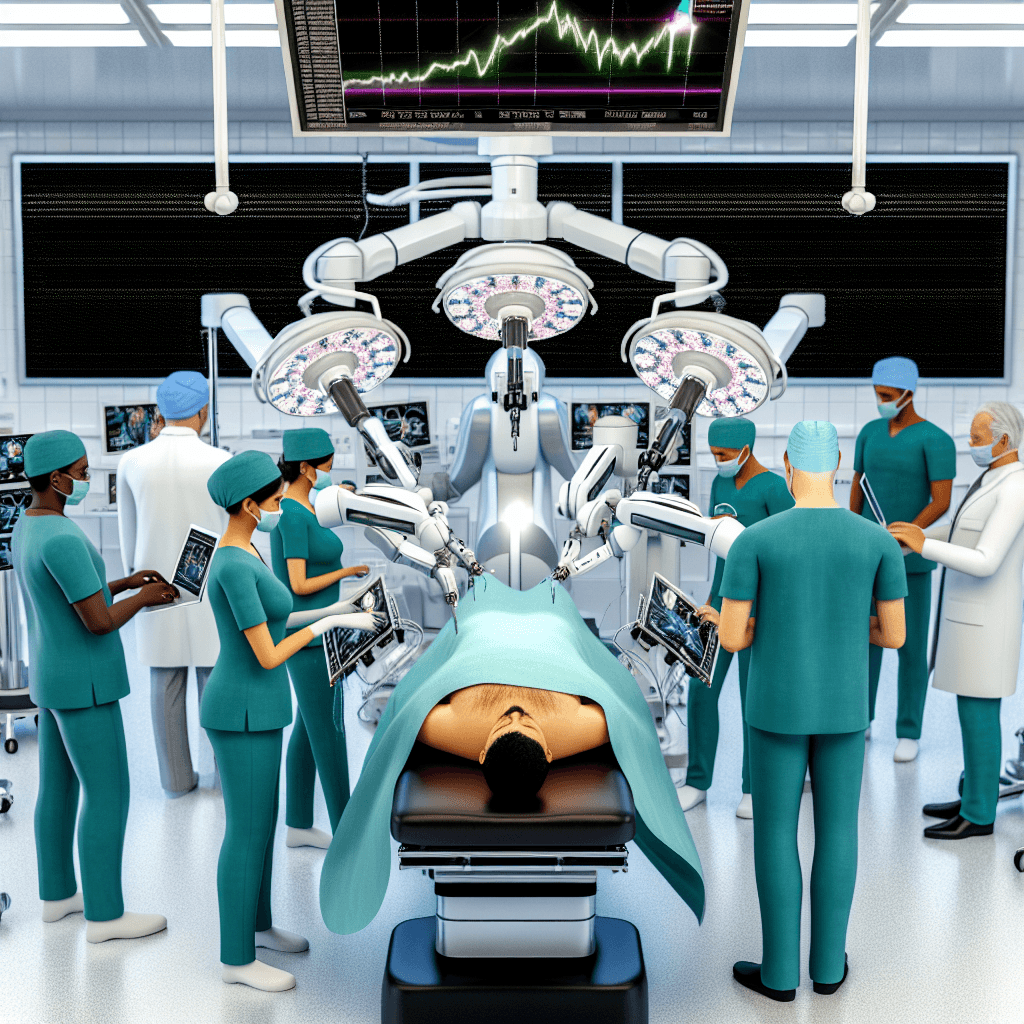Explore the dynamic market of surgical robots in healthcare, enhancing precision and efficiency in operations.
Healthcare Robotics-Surgical Robots Market

Table of Contents
- Exploring the Surge in Healthcare Robotics: The Surgical Robots Market
- The Current Landscape of Surgical Robots
- Market Growth and Statistics
- Technological Advancements
- Key Players in the Surgical Robots Market
- Case Studies and Real-World Applications
- Case Study: da Vinci Surgical System
- Case Study: Mako Robotic-Arm Assisted Surgery
- Challenges and Future Directions
- Conclusion: The Road Ahead for Surgical Robots
Exploring the Surge in Healthcare Robotics: The Surgical Robots Market

The integration of robotics into healthcare, particularly in the surgical field, represents one of the most significant technological evolutions in medicine. Surgical robots are reshaping how surgeries are performed by enhancing the capabilities of surgeons, potentially leading to better patient outcomes and more efficient healthcare systems. This article delves into the current landscape, key players, technological advancements, and future prospects of the surgical robots market.
The Current Landscape of Surgical Robots
Surgical robots have transformed from a novel technology to a crucial tool in various surgical specialties including urology, gynecology, and cardiothoracic surgery. These systems offer high precision, increased range of motion, and improved access to difficult-to-reach areas, thereby enabling minimally invasive procedures that promise quicker recovery times and reduced postoperative complications.
Market Growth and Statistics
The global surgical robots market is experiencing robust growth. According to a report by MarketsandMarkets, the market is projected to reach USD 11.8 billion by 2025 from USD 6.7 billion in 2020, at a CAGR of 12.1% during the forecast period. This growth is driven by the increasing adoption of minimally invasive surgeries, technological advancements in surgical robots, and improvements in healthcare infrastructure across the globe.
Technological Advancements
Recent technological advancements have significantly expanded the capabilities of surgical robots. Innovations such as enhanced 3D visualization, greater flexibility, and improved software algorithms that ensure precision and control during surgeries are pivotal. Moreover, integration with artificial intelligence (AI) and machine learning (ML) is setting the stage for autonomous or semi-autonomous surgical procedures, which could further revolutionize this field.
Key Players in the Surgical Robots Market
Several global entities are leading the charge in the development and distribution of surgical robots:
- Intuitive Surgical: Known for its da Vinci surgical systems, Intuitive Surgical is a major player in the market. The da Vinci system is widely used in hospitals around the world and has been continually upgraded to enhance its functionality.
- Medtronic: Medtronic’s Mazor Robotics platform specializes in spine and brain surgeries, offering precise guidance and planning capabilities.
- Stryker: Stryker’s Mako robots provide solutions for orthopedic surgeries, particularly knee and hip replacements, enhancing surgical accuracy and patient outcomes.
- Zimmer Biomet: This company has made significant strides with its Rosa Robot, which supports both brain and knee surgeries.
These companies not only contribute to technological advancements but also to the expansion of the global reach of surgical robots through strategic partnerships and acquisitions.
Case Studies and Real-World Applications
Exploring specific instances where surgical robots have made a difference underscores their value:
Case Study: da Vinci Surgical System
One of the most well-documented cases of surgical robots’ effectiveness involves the da Vinci Surgical System. A study published in the Journal of the American Medical Association observed that patients undergoing robotic-assisted surgeries had fewer complications and shorter hospital stays compared to traditional methods. This system has been particularly impactful in procedures such as prostatectomies and hysterectomies.
Case Study: Mako Robotic-Arm Assisted Surgery
In orthopedics, Stryker’s Mako System has revolutionized joint replacement surgeries. The Mako system provides patient-specific 3D models to pre-plan surgeries and guides the surgeon within predefined boundaries during the procedure, which helps in preserving healthy bone and placing implants with accuracy.
Challenges and Future Directions
Despite the promising advancements and growing adoption, the surgical robots market faces several challenges:
- High Costs: The initial investment for surgical robots can be prohibitively high, limiting accessibility for many healthcare institutions, especially in developing countries.
- Training and Integration: There is a significant learning curve associated with using surgical robots. Surgeons and medical staff need comprehensive training to operate these systems effectively.
- Regulatory Hurdles: Surgical robots are subject to stringent regulatory approvals which can delay their introduction to the market.
Looking ahead, the future of surgical robots is geared towards overcoming these challenges while enhancing capabilities through AI and ML. The next generation of surgical robots is expected to be more intuitive, with capabilities such as real-time response to tissue resistance and more autonomous functions.
Conclusion: The Road Ahead for Surgical Robots
The surgical robots market is poised for significant growth, driven by continuous technological advancements and an increasing emphasis on patient-centered care. As these systems become more integrated into various surgical disciplines, they promise to enhance surgical precision, reduce recovery times, and ultimately, improve health outcomes. With ongoing research and development, the next few years will be crucial in determining how widespread and transformative surgical robots will become in the global healthcare landscape.
In conclusion, while challenges remain, the potential of surgical robots to redefine surgical practices is undeniable. Stakeholders in the healthcare sector must navigate these challenges strategically to fully leverage the benefits of this promising technology.








